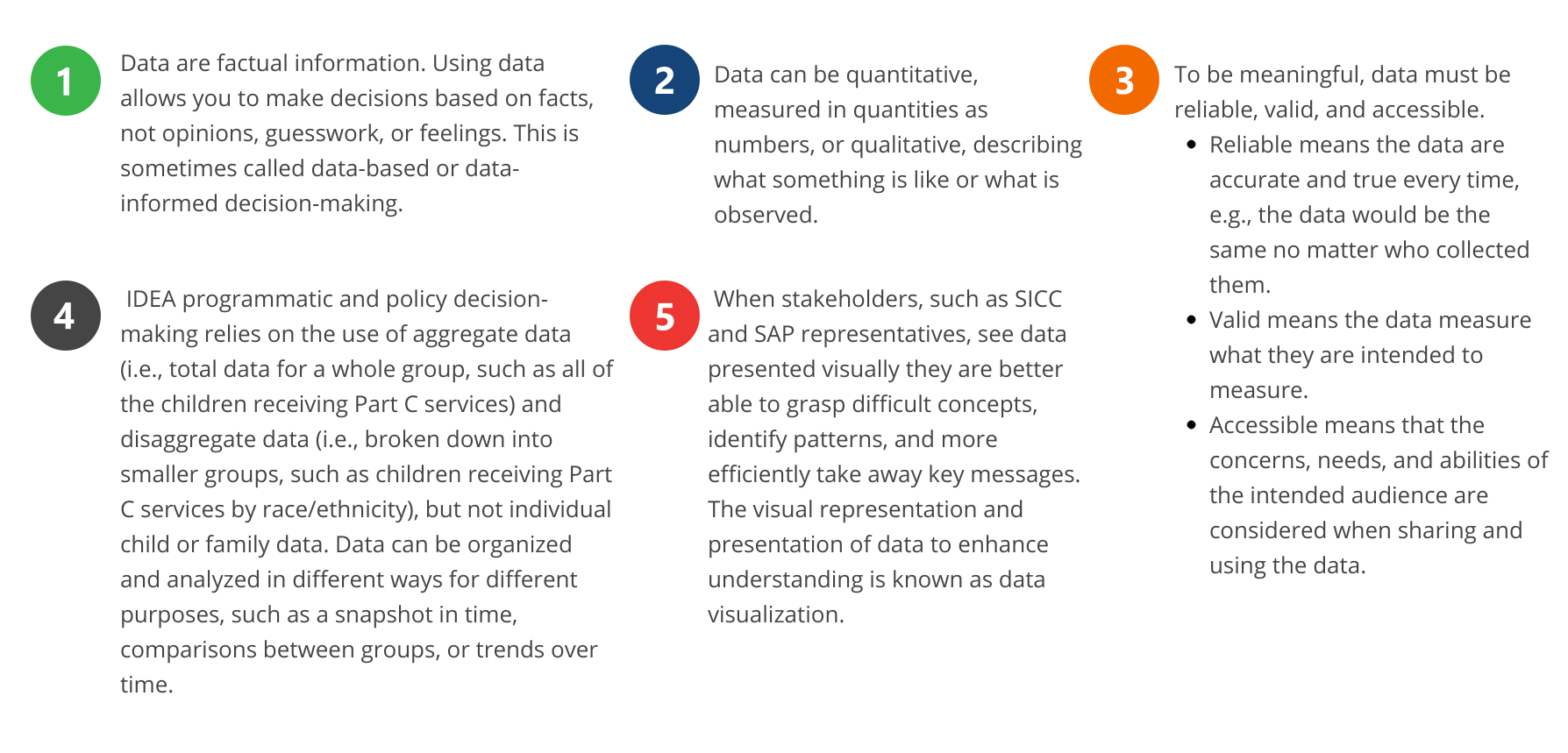- Overview
- Introduction
- Data as information
- IDEA Section 618 data
- SPP/APR
- SSIP
- Data privacy & confidentiality
- Data linkages

Part C and Part B 619 stakeholders, such as State Interagency Coordinating Council (SICC) and State Advisory Panel (SAP) representatives, are often presented with data. They are charged with the task of using those data to better understand the system of services for children with disabilities and their families, and are expected to participate in conversations about decisions to improve the system. This, however, can be challenging without some basic understanding of what data are and how data are used as information.
In this section, you will learn about:
- The definition of data and other data-related terms;
- How data are used as information to guide decision-making; and
- Strategies to help you confidently and actively participate in conversations about data.
What do I need to know?
Adapted from Serving on Groups: Understanding Data as Information (Wisconsin Family Assistance Center for Education, Training, and Support, 2013). Download a PDF version of this section.

How do I build my knowledge?
Serving on Groups is a guidebook and online learning module created by the Wisconsin Family Assistance Center for Education, Training, and Support to support members of stakeholder groups, such as SICCs and SAPs. The Understanding Data as Information section is intended to build basic data literacy and describe the steps or stages involved in using data. It provides an introduction about data for some and a good refresher for those with more experience using data.
View the full Serving on Groups Guidebook (see Section 6: Understanding Data as Information)
How do I apply this to my state?
As a Part C or Part B 619 stakeholder, you need to be able to interpret data and draw conclusions. To do this, you need to be able to ask good questions about data. When data are presented to you at the next stakeholder meeting, consider asking these questions to help you interpret and analyze the information:

Download a PDF version of this section.
What are some related resources?
- You Need Data to Personalize Learning. This infographic developed by the Data Quality Campaign shows some of the many ways in which data are used to achieve outcomes for children/students.
- Perspectives on Data Use. These 2- to 3-minute videos created by the DaSy Center describe some of the ways that key stakeholders are using data in their work to support children with disabilities and their families.

